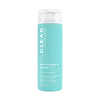What's inside
What's inside
 Key Ingredients
Key Ingredients

 Benefits
Benefits

 Concerns
Concerns

 Ingredients Side-by-side
Ingredients Side-by-side

Water
Skin ConditioningSodium Laureth Sulfate
CleansingCocamidopropyl Betaine
CleansingLauryl Glucoside
CleansingPropylene Glycol
HumectantSalicylic Acid
MaskingGlycolic Acid
BufferingQuercus Alba Bark Extract
AstringentCitrus Grandis Fruit Extract
AstringentPrunus Persica Fruit Extract
AbrasiveCitrus Aurantifolia Fruit Extract
Skin ConditioningCitrus Limon Fruit Extract
MaskingArginine
MaskingTilia Cordata Flower Extract
Skin ConditioningAllantoin
Skin ConditioningBHT
AntioxidantPanthenol
Skin ConditioningButylene Glycol
HumectantPotassium Sorbate
PreservativeSodium Benzoate
MaskingPhenoxyethanol
PreservativeAmyl Cinnamal
PerfumingLinalool
PerfumingParfum
MaskingCI 16035
Cosmetic ColorantCI 19140
Cosmetic ColorantWater, Sodium Laureth Sulfate, Cocamidopropyl Betaine, Lauryl Glucoside, Propylene Glycol, Salicylic Acid, Glycolic Acid, Quercus Alba Bark Extract, Citrus Grandis Fruit Extract, Prunus Persica Fruit Extract, Citrus Aurantifolia Fruit Extract, Citrus Limon Fruit Extract, Arginine, Tilia Cordata Flower Extract, Allantoin, BHT, Panthenol, Butylene Glycol, Potassium Sorbate, Sodium Benzoate, Phenoxyethanol, Amyl Cinnamal, Linalool, Parfum, CI 16035, CI 19140
Salicylic Acid
MaskingWater
Skin ConditioningSodium Lauroyl Sarcosinate
CleansingAcrylates/Steareth-20 Methacrylate Copolymer
Glycerin
HumectantPEG-200 Hydrogenated Glyceryl Palmate
CleansingSodium Laureth Sulfate
CleansingArginine
MaskingButylene Glycol
HumectantPEG-7 Glyceryl Cocoate
EmulsifyingPanthenol
Skin ConditioningDisodium EDTA
Citric Acid
BufferingPEG-60 Hydrogenated Castor Oil
EmulsifyingSodium Citrate
BufferingPhenoxyethanol
PreservativeCaprylyl Glycol
EmollientChlorphenesin
AntimicrobialSalicylic Acid, Water, Sodium Lauroyl Sarcosinate, Acrylates/Steareth-20 Methacrylate Copolymer, Glycerin, PEG-200 Hydrogenated Glyceryl Palmate, Sodium Laureth Sulfate, Arginine, Butylene Glycol, PEG-7 Glyceryl Cocoate, Panthenol, Disodium EDTA, Citric Acid, PEG-60 Hydrogenated Castor Oil, Sodium Citrate, Phenoxyethanol, Caprylyl Glycol, Chlorphenesin
 Reviews
Reviews

Ingredients Explained
These ingredients are found in both products.
Ingredients higher up in an ingredient list are typically present in a larger amount.
Arginine is an amino acid that is important for human development. Your body uses is it to produce hair keratin and skin collagen.
As a cosmetic ingredient, Arginine has antioxidant properties and can also help repair damaged skin. This ingredient is derived either synthetically or from animals.
Arginine isn't fungal acne safe when used in the presence of other lipids (fats, fatty acids, oils, esters, etc). Oils and fats occur naturally within the skin, so take caution when using Arginine if you're prone to fungal acne.
Learn more about ArginineButylene Glycol (or BG) is used within cosmetic products for a few different reasons:
Overall, Butylene Glycol is a safe and well-rounded ingredient that works well with other ingredients.
Though this ingredient works well with most skin types, some people with sensitive skin may experience a reaction such as allergic rashes, closed comedones, or itchiness.
Learn more about Butylene GlycolPanthenol is a common ingredient that helps hydrate and soothe the skin. It is found naturally in our skin and hair.
There are two forms of panthenol: D and L.
D-panthenol is also known as dexpanthenol. Most cosmetics use dexpanthenol or a mixture of D and L-panthenol.
Panthenol is famous due to its ability to go deeper into the skin's layers. Using this ingredient has numerous pros (and no cons):
Like hyaluronic acid, panthenol is a humectant. Humectants are able to bind and hold large amounts of water to keep skin hydrated.
This ingredient works well for wound healing. It works by increasing tissue in the wound and helps close open wounds.
Once oxidized, panthenol converts to pantothenic acid. Panthothenic acid is found in all living cells.
This ingredient is also referred to as pro-vitamin B5.
Learn more about PanthenolPhenoxyethanol is a preservative that has germicide, antimicrobial, and aromatic properties. Studies show that phenoxyethanol can prevent microbial growth. By itself, it has a scent that is similar to that of a rose.
It's often used in formulations along with Caprylyl Glycol to preserve the shelf life of products.
Salicylic Acid (also known as beta hydroxy acid or BHA) is a well-known ingredient for treating skin that struggles with acne and clogged pores. It exfoliates both the skin's surface and deep within the pores to help clear out buildup, control oil, and reduce inflammation.
Unlike AHAs (alpha hydroxy acids), salicylic acid is oil-soluble. This allows it to penetrate into pores which makes it especially effective for treating blackheads and preventing future breakouts.
Salicylic acid is also known for its soothing properties. It has a similar structure to aspirin and can calm inflamed or irritated skin, making it a good option for acne-prone skin that is also sensitive.
Concentrations of 0.5-2% are recognized by the U.S. FDA as an over-the-counter topical acne product.
It can cause irritation and/or dryness if one's skin already has a compromised moisture barrier, so it's best to focus on repairing that before introducing this ingredient into your routine.
While salicylic acid does not increase sun sensitivity, it’s still important to wear sunscreen daily to protect your skin.
If you are looking for the ingredient called BHA or Butylated Hydroxyanisole, click here.
Learn more about Salicylic AcidSodium Laureth Sulfate (SLES) is a foaming, cleansing, and emulsifying ingredient. It is created from palm kernel oil or coconut oil. SLES is not the same as sodium lauryl sulfate. It is much milder and less likely to irritate.
SLES helps create foam in personal products. It also prevents ingredients from separating, helping to elongate the shelf life.
Sodium Laureth Sulfate is a type of sulfate. It can be drying. We recommend speaking with a professional about using this ingredient if you have concerns.
Learn more about Sodium Laureth SulfateWater. It's the most common cosmetic ingredient of all. You'll usually see it at the top of ingredient lists, meaning that it makes up the largest part of the product.
So why is it so popular? Water most often acts as a solvent - this means that it helps dissolve other ingredients into the formulation.
You'll also recognize water as that liquid we all need to stay alive. If you see this, drink a glass of water. Stay hydrated!
Learn more about Water